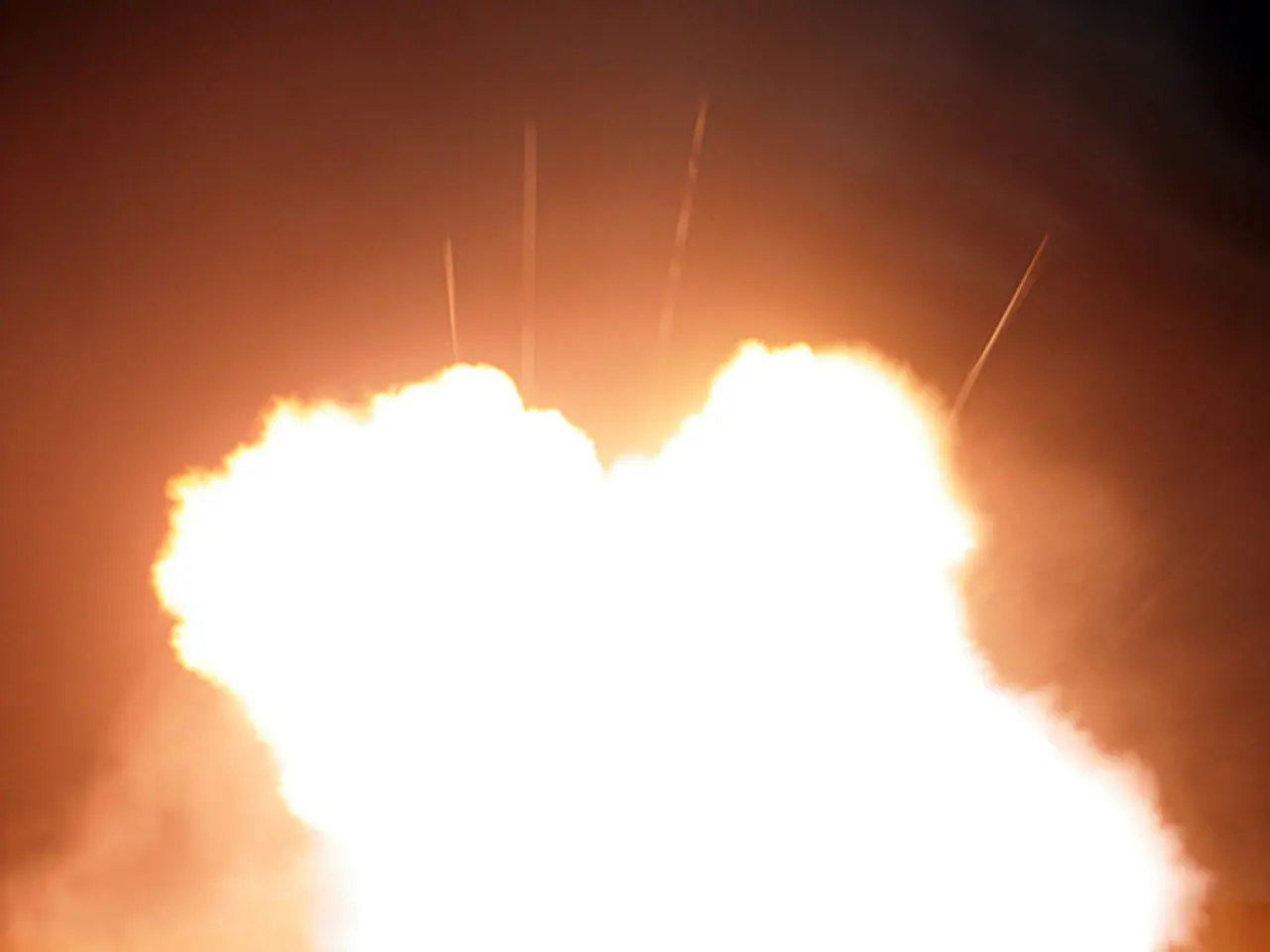Uncontained wildfires spread in New Brunswick, with two regions engulfed, and no stormy weather on the horizon.
New Brunswick Battles 36 Active Wildfires Amidst Drought and Heat Wave
New Brunswick is currently grappling with a significant wildfire outbreak, with 36 active wildfires[1] spreading across the province as of August 18, 2025. The situation is particularly severe in the Miramichi area and the northern part of the province, where many fires have been ignited by lightning strikes [4].
The Old Field Road fire near Miramichi, which started on August 6, has been officially classified as contained but is still actively burning on some edges, covering approximately 1,402 hectares[1]. Six other fires, including the Chief's (250 hectares), Lovalls Lake (273 hectares), Beaver Lake Stream (256 hectares), Jacquet River PNA (270 hectares), Hells Gate (278 hectares), and Jacquet River (281 hectares), are currently out of control[1].
Despite these challenges, firefighting efforts are proving effective in managing major fires like the Old Field Road fire. However, several smaller fires remain out of control [1][4]. No residents are currently under evacuation advisories, but locals near fires are advised to be prepared and stay indoors when possible due to poor air quality [4]. Smoke from wildfires in New Brunswick and neighboring Nova Scotia is causing smoke drifting that affects air quality in Fredericton and has triggered numerous fire-related emergency calls [5].
Premier Susan Holt has stated that New Brunswick is in an unprecedented situation, and it is getting worse [2]. A heat warning is in place for the province, with daytime temperatures expected to hit as high as 35 C with humidex values between 38 to 43, except for parts of the coast such as Bay of Fundy which will feel cooler. Unfortunately, the forecast does not show any rain for at least another week [3].
In response to the danger posed by the wildfires, a restriction on public access to Crown Lands went into effect as of 12:01 a.m. on Sunday in N.B. [3]. This prohibits all industrial and recreational activities on Crown land due to extremely dry and dangerous conditions. People in the Irishtown, Tankville, Evangeline, and Lakeville areas have been advised to be prepared to evacuate on short notice due to wildfires posing a potential threat to people and property [3]. Officials are also encouraging private landowners to take similar precautions.
The wildfire situation in New Brunswick is serious but showing some signs of management. The province remains on alert with some closures and protective measures in effect around affected areas [3]. As of Monday, there are 12 active wildfires in New Brunswick according to the Wildland Fire Reporting System [3].
Summary:
- New Brunswick is currently battling 36 active wildfires.
- The Old Field Road fire near Miramichi is contained but still burning on some edges, covering approximately 1,402 hectares.
- Six fires, including the Chief's, Lovalls Lake, Beaver Lake Stream, Jacquet River PNA, Hells Gate, and Jacquet River, are out of control.
- No residents are currently under evacuation advisories, but locals near fires are advised to be prepared and stay indoors when possible due to poor air quality.
- Smoke from wildfires in New Brunswick and neighboring Nova Scotia is affecting air quality in Fredericton and has triggered numerous fire-related emergency calls.
- The province is in an unprecedented situation, with a heat warning in place and no rain forecast for at least another week.
- Public access to Crown Lands is restricted, and people in certain areas have been advised to be prepared to evacuate on short notice.
[1] New Brunswick Wildfire Dashboard
[2] CBC News
[3] Government of New Brunswick
[4] Global News
[5] CTV News
- The severe wildfire outbreak in New Brunswick can be attributed to the extensive studies in environmental science, revealing the impact of weather patterns on wildfire frequency and severity.
- Furthermore, understanding the science behind weather conditions and environmental changes can aid in predicting the spread and intensity of wildfires, thereby enabling better prevention and management strategies.






